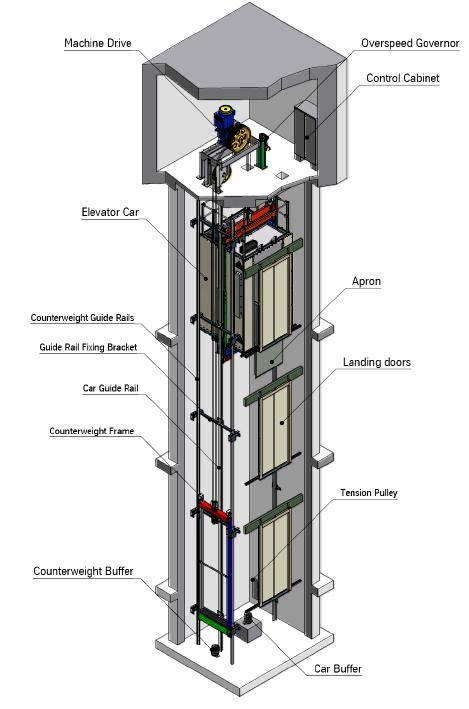As urban environments evolve and buildings grow taller, elevator technology plays an essential role in enhancing vertical transportation. One of the most commonly used and efficient types of elevators is the traction elevator. Nelevator, based in San Francisco, is committed to delivering high-quality elevator solutions, and traction elevators are at the forefront of our offerings.
What is a Traction Elevator?
A traction elevator operates by using ropes or steel cables that loop over a sheave (a pulley system), connected to an electric motor. The counterweight system helps balance the elevator, allowing the motor to use less power while lifting the elevator car. This design makes traction elevators energy-efficient and reliable, ideal for mid to high-rise buildings.
Advantages of Traction Elevators

- Energy Efficiency
Traction elevators require less power compared to hydraulic elevators because the counterweight system shares the load. This translates to lower energy consumption, making them a more eco-friendly option for buildings focused on sustainability. - Smooth Ride Quality
The sophisticated mechanism in traction elevators allows for a smoother ride, with minimal jerking and vibrations. This is crucial in high-rise buildings where the comfort of passengers is a priority. - Faster Speeds
For tall buildings, speed is an essential factor. Traction elevators can move at higher speeds than hydraulic models, making them perfect for skyscrapers and office towers where quick vertical transportation is key. - Space Efficiency
Unlike hydraulic elevators, which require a machine room below the elevator shaft, traction elevators use less space, as the machinery can be located at the top of the elevator shaft. This space-saving design is especially important in modern urban environments like San Francisco, where maximizing space is vital.
Types of Traction Elevators
There are two primary types of traction elevators:
- Geared Traction Elevators
These elevators have a gearbox that controls the movement of the lift. They are typically used in buildings with moderate height and require lower maintenance costs. - Gearless Traction Elevators
In gearless models, the sheave is directly connected to the motor, allowing for smoother operation and faster speeds. These are commonly used in skyscrapers and high-rise buildings where speed and comfort are crucial.
When to Choose a Traction Elevator?
Traction elevators are ideal for buildings that are more than five stories tall, especially in busy environments like corporate offices, residential towers, and hotels. Nelevator can help you determine if a traction elevator is the best fit for your building’s requirements.
Maintenance and Durability
Traction elevators require regular maintenance to ensure their longevity and performance. Routine inspections of the cables, pulleys, and motor systems help to keep the elevator running smoothly and safely. At Nelevator, our team provides comprehensive maintenance services to minimize downtime and extend the life of your traction elevator.
Why Nelevator?
As a trusted provider of elevator solutions in San Francisco, Nelevator has the expertise and experience to install and maintain traction elevators that suit your building’s needs. Whether you’re upgrading an older system or installing a new elevator in a high-rise project, our traction elevators offer the speed, efficiency, and reliability that your building requires.
Conclusion
Traction elevators remain a popular choice for modern high-rise buildings due to their efficiency, speed, and smooth ride quality. If you’re looking for a vertical transportation solution that combines performance and energy savings, consider a traction elevator. Contact Nelevator today to learn how we can help elevate your building’s functionality with our top-tier traction elevator systems.